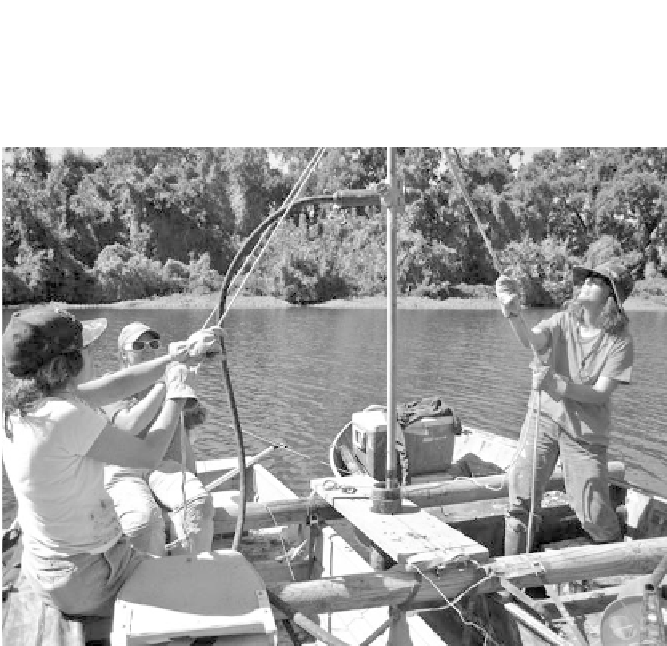Geoscience Reference
In-Depth Information
figure 15. (
Let to right
) Frances Malamud-Roam, B. Lynn Ingram, and Christina Brady
coring a small oxbow lake in the Sacramento Valley, California. (Photo taken by Anders
Noren, University of Minnesota, LaCore curator.)
Lakes
Lakes are a common feature in the western landscape, and their sediments
are important repositories of evidence about past climatic conditions gath-
ered from the surrounding watershed. Particularly useful are lakes that
grow and shrink with changing precipitation patterns, providing unique
opportunities to assess the balance of rainfall and evaporation—a balance
that changes markedly with dif ering climate regimes. h ese types of lakes,
called closed basins, receive freshwater from inl owing streams and rivers
and from direct rainfall, and they lose water only by evaporation from
their surface.
An example of such a closed basin lake is Mono Lake to the east of the
Sierra Nevada of California. Records of the size of Mono Lake over the past
century and a half show that, during periods of more rainfall, the lake gradu-
ally expanded, whereas during periods of extended drought, the lake became
smaller. h is lake also contracted when the city of Los Angeles diverted water
from its inl owing streams, starting in 1941. As the size of the lake changes,
so does the elevation of its surface, measured as its lake level.




























